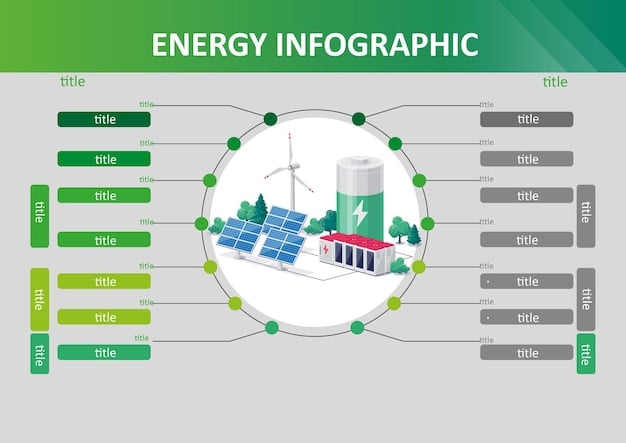Trending Now: 5 Environmental Bills to Watch in Congress This January

As Congress reconvenes this January, a slate of five critical environmental bills is poised to reshape climate policy and conservation efforts, demanding close attention from policymakers, advocates, and the public as they navigate diverse challenges from renewable energy incentives to biodiversity protection.
As the new legislative session kicks off, the halls of Congress are once again buzzing with activity. For those keenly observing the intersection of policy and planet,
The Ambitious Climate Resiliency Act
The Climate Resiliency Act is emerging as a flagship piece of environmental legislation this January, designed to bolster the nation’s infrastructure against the escalating impacts of climate change. This comprehensive bill seeks to allocate substantial federal funding towards projects that enhance community resilience, from upgrading aging flood defenses to investing in sustainable urban planning. Proponents argue that proactive investment in resiliency measures is not only economically prudent but also essential for safeguarding lives and livelihoods in vulnerable regions.
One of the act’s primary objectives is to create a national framework for climate adaptation, fostering inter-agency coordination and providing states with resources to develop their own tailored strategies. It envisions a future where communities are better equipped to withstand extreme weather events, reduce their carbon footprint, and transition towards a more sustainable economy.
Funding Mechanisms and Criticisms
The bill proposes several innovative funding mechanisms, including a mix of direct federal appropriations, bond issuances, and public-private partnerships. A significant portion is earmarked for disadvantaged communities, aiming to address environmental justice concerns by prioritizing areas historically burdened by pollution and climate inequities.
- Federal Grants: Direct financial aid to states and municipalities for climate infrastructure projects.
- “Green Bonds”: A new financial instrument designed to attract private investment in sustainable projects.
- Community Resilience Hubs: Funding for local centers that provide resources and training on climate adaptation.
- Environmental Justice Allocations: Specific funding set aside for vulnerable communities to ensure equitable climate action.
However, the Climate Resiliency Act faces criticism regarding its potential cost and scope. Some lawmakers express concerns about the long-term financial implications and the extent of federal involvement in local planning. Debates are likely to center on the balance between national oversight and local autonomy, as well as the fair distribution of resources across diverse geographic and economic landscapes. The bill’s passage hinges on significant bipartisan negotiation and a clear articulation of its long-term benefits.
As discussions unfold, the Climate Resiliency Act remains a pivotal point of interest, symbolizing a significant step towards a more climate-adaptive nation. Its trajectory this month will offer valuable insights into the legislative appetite for large-scale environmental investments.
Advancing Renewable Energy Incentives Initiative
The Advancing Renewable Energy Incentives Initiative is another prominent bill gaining traction, aiming to accelerate the transition from fossil fuels to clean energy sources across the United States. This legislation proposes a suite of enhanced tax credits, grants, and regulatory reforms designed to make renewable energy more competitive and accessible for businesses and consumers alike. The premise is simple: by reducing the financial barriers to adopting solar, wind, and geothermal power, the nation can significantly reduce its carbon emissions and foster energy independence.
This initiative builds upon existing frameworks, seeking to expand their reach and effectiveness. It outlines ambitious targets for renewable energy generation and storage, recognizing that a robust energy grid is crucial for widespread adoption. The bill also emphasizes domestic manufacturing of renewable energy components, aiming to create jobs and strengthen the national economy.
Key Provisions for Green Energy Growth
The proposed legislative package includes several key provisions intended to spur growth in the renewable energy sector. One of the most significant aspects is the expansion of investment tax credits (ITCs) and production tax credits (PTCs) for solar and wind projects, making them more financially viable for developers. These incentives are often crucial for overcoming the initial capital costs associated with large-scale renewable installations.
- Extended Tax Credits: Lengthening and increasing the value of ITCs and PTCs for renewable energy.
- R&D Funding: Significant investments in research and development for emerging clean energy technologies.
- Grid Modernization: Funds allocated for upgrading the national grid to better integrate intermittent renewable sources.
- Electric Vehicle Charging Infrastructure: Incentives for expanding EV charging networks nationwide.
However, the bill faces opposition from sectors tied to traditional energy industries, who argue that such incentives could create an uneven playing field and lead to job losses in their sectors. Debates are expected to highlight the delicate balance between promoting new industries and managing the transition for existing ones. Environmental advocates, conversely, stress the urgency of accelerating this transition, pointing to the latest climate science as a call to action.
The coming weeks will be critical in determining the fate of the Advancing Renewable Energy Incentives Initiative. Its progress will signify the government’s commitment to a cleaner energy future and its willingness to invest in the technologies that will define the next era of energy production.

The National Water Quality Protection Act Amendments
The National Water Quality Protection Act Amendments represent a crucial legislative effort to update and strengthen existing regulations governing water pollution and conservation. This bill aims to address emerging threats to water quality, including persistent organic pollutants, microplastics, and pharmaceutical contaminants, which are not adequately covered by current laws. It proposes more rigorous standards for industrial and agricultural discharges, as well as increased funding for water infrastructure improvements and restoration projects.
Central to the amendments is the recognition that clean water is not only vital for public health but also for ecosystem integrity and economic prosperity. The legislation seeks to empower regulatory agencies with better tools and resources to monitor water quality, enforce compliance, and respond to environmental emergencies. It also emphasizes a holistic watershed approach to management, encouraging collaboration across jurisdictions to protect interconnected water systems.
Enhancing Protections for Aquatic Ecosystems
A key focus of these amendments is the enhancement of protections for aquatic ecosystems, including rivers, lakes, wetlands, and coastal waters. The bill introduces new provisions for habitat restoration, aiming to revive degraded ecosystems and support biodiversity. It also calls for improved monitoring of aquatic health indicators and the development of early warning systems for pollution events.
- Stricter Discharge Limits: Imposing tighter limits on pollutants released into waterways.
- Wetland Conservation: Increased protections and funding for wetland restoration initiatives.
- Groundwater Safeguards: New measures to prevent contamination of underground water sources.
- Coastal Zone Management: Enhanced support for programs protecting and restoring coastal environments.
The proposed amendments have garnered support from environmental groups and public health organizations, who underscore the growing challenges to water quality nationwide. However, some industrial sectors and agricultural interests have expressed concerns about the potential economic burden of stricter regulations. Debates are anticipated around the feasibility of implementing new standards and the availability of resources for compliance, particularly for smaller businesses and farms.
As Congress delves into the intricacies of water policy, the National Water Quality Protection Act Amendments will underscore the ongoing tension between environmental protection and economic development. Its progress will signal the nation’s commitment to ensuring safe and clean water for all.
Conservation and Biodiversity Protection Bill
The Conservation and Biodiversity Protection Bill is designed to address the pressing issue of species loss and habitat degradation across the United States. This legislation proposes a multi-faceted approach to conservation, including expanding protected areas, enhancing funding for endangered species recovery programs, and promoting sustainable land management practices. It articulates a national strategy for biodiversity, recognizing the intrinsic value of diverse ecosystems and their essential role in supporting human well-being.
This bill seeks to integrate ecological considerations into various sectors, from urban planning to agricultural policy. It emphasizes the importance of connectivity between habitats, aiming to create corridors that allow wildlife to move freely and adapt to changing environmental conditions. Furthermore, it advocates for increased public access to natural spaces, fostering appreciation for biodiversity and encouraging outdoor recreation.
Strategies for Habitat Restoration and Species Recovery
Key components of the bill include robust strategies for habitat restoration and species recovery. It proposes significant investments in restoring degraded landscapes, such as wetlands, forests, and prairies, which serve as critical habitats for numerous species. The legislation also aims to modernize the Endangered Species Act, providing it with renewed financial support and adaptability to emerging threats like climate change.
- Enhanced ESA Funding: Increased appropriations for the Endangered Species Act’s implementation.
- Habitat Connectivity Corridors: Initiatives to establish and protect ecological corridors between wild spaces.
- Invasive Species Control: Funding for programs designed to manage and eradicate invasive species.
- Private Land Stewardship: Incentives for private landowners to adopt conservation-friendly practices.
While the bill enjoys broad support from conservation organizations and scientific communities, it may face scrutiny from development interests and some private landholders who express concerns about potential land use restrictions. Discussions are expected to focus on striking a balance between protecting critical habitats and respecting private property rights, as well as ensuring that conservation efforts are effective and scientifically sound. The challenge lies in creating a framework that can protect biodiversity while accommodating the diverse needs and interests of a growing population.
The Conservation and Biodiversity Protection Bill is a vital piece of legislation that could redefine the nation’s approach to protecting its natural heritage. Its journey through Congress this January will be a significant indicator of the political will to address the biodiversity crisis.
Sustainable Agriculture Transition Act
The Sustainable Agriculture Transition Act is gaining considerable attention, aiming to transform agricultural practices across the country to be more environmentally friendly and resilient. This bill proposes a comprehensive package of incentives, research funding, and technical assistance to encourage farmers to adopt sustainable methods, such as organic farming, agroforestry, and reduced tillage. The goal is to mitigate agriculture’s environmental footprint, improve soil health, conserve water, and reduce reliance on synthetic inputs.
The legislation acknowledges the crucial role of farmers in environmental stewardship and seeks to support them in their transition towards more sustainable systems. It recognizes that a healthy agricultural sector is fundamental for food security and rural economic vitality, and that sustainable practices can enhance both of these objectives. The bill also looks to support localized food systems and reduce food waste.
Incentivizing Eco-Friendly Farming Practices
Key provisions of the Sustainable Agriculture Transition Act emphasize incentivizing eco-friendly farming practices. This includes direct payments to farmers who implement conservation practices, cost-sharing programs for adopting new sustainable technologies, and expanded crop insurance options that reward environmental performance. The proposed investments in research aim to develop new tools and techniques that make sustainable farming more productive and profitable.
- Conservation Grants: Financial aid for farmers implementing sustainable land management.
- Organic Transition Support: Programs to assist conventional farms in converting to organic status.
- Soil Health Initiatives: Funding for practices that enhance soil carbon sequestration and overall soil health.
- Local Food System Development: Grants and support for farmers’ markets and community-supported agriculture (CSAs).
While environmental groups and consumer advocates largely welcome the bill, some large-scale agricultural operations may express concerns about the cost and complexity of transitioning to new practices. Debates are anticipated around the practicality of implementing nationwide changes, the accessibility of incentives for small and medium-sized farms, and the overall impact on food prices. The act seeks to balance these concerns by offering flexible programs and focusing on long-term benefits for both farmers and the environment.
The Sustainable Agriculture Transition Act represents a forward-thinking approach to food production and land management. Its progress this January will indicate the political appetite for transforming the agricultural landscape towards a more sustainable and equitable future.

Navigating the Legislative Landscape Ahead
The initial weeks of January are often a flurry of activity, setting the tone for the entire legislative year. For these five critical environmental bills, the coming debates will be more than just parliamentary procedure; they represent a fundamental discussion about the nation’s priorities and its commitment to a sustainable future. Each bill, from the Climate Resiliency Act to the Sustainable Agriculture Transition Act, addresses a distinct yet interconnected aspect of environmental stewardship, highlighting the multifaceted challenges and opportunities facing policymakers.
These pieces of legislation are also a reflection of evolving public sentiment, which increasingly demands decisive action on climate change and environmental protection. As these bills move through committees and onto the floor, they will undoubtedly undergo revisions, compromises, and possibly even significant changes. The political climate, current economic conditions, and the ability of various stakeholders to influence the legislative process will all play a crucial role in their eventual shape and fate.
Collaboration and Bipartisanship in Environmental Policy
A key factor in the success of any of these bills will be the extent to which they can garner bipartisan support. Environmental policy, while often contentious, also offers opportunities for collaboration, particularly when framed around issues of economic competitiveness, national security, or public health. Finding common ground, even on seemingly intractable issues, will be paramount.
- Cross-Party Dialogue: Encouraging open discussions and finding areas of mutual interest among differing political factions.
- Scientific Consensus: Leveraging expert opinions and scientific data to inform policy decisions across the aisle.
- Economic Benefits: Highlighting the financial opportunities and job creation potential inherent in green initiatives.
- Community Engagement: Ensuring local voices and concerns are heard and integrated into national policy.
Moreover, the role of advocacy groups, industry associations, and academic experts cannot be overstated. Their input, research, and lobbying efforts will heavily influence the discourse and ultimately the decisions made by elected officials. The legislative process is a dynamic one, where information, arguments, and public opinion continuously shape the trajectory of a bill.
As January unfolds, observing the progress of these environmental bills will provide a telling snapshot of legislative priorities and the political landscape. Their success could herald a new era of robust environmental action, while their challenges will illuminate the ongoing obstacles to achieving comprehensive sustainability goals. The outcomes will impact generations to come, making their oversight a matter of significant public interest.
| Key Bill | Brief Description |
|---|---|
| 🌊 Climate Resiliency | Enhances infrastructure against climate impact, focusing on adaptation and justice. |
| ☀️ Renewable Incentives | Boosts clean energy adoption with tax credits and R&D funding. |
| 💧 Water Quality Amendments | Strengthens protections against water pollution and supports ecosystem health. |
| 🌳 Biodiversity Protection | Expands protected areas and funds species recovery to curb habitat loss. |
Frequently Asked Questions About January’s Environmental Bills
The Climate Resiliency Act aims to fortify national infrastructure against future climate impacts. It proposes significant federal funding for projects that enhance community resilience, including flood defense upgrades and sustainable urban planning, ensuring communities are better prepared for extreme weather events and shifting environmental conditions.
This initiative seeks to accelerate the transition to clean energy by offering enhanced tax credits, grants, and regulatory reforms. Its goal is to make renewable energy sources like solar and wind more competitive and accessible, thereby reducing carbon emissions and fostering greater energy independence across the U.S.
The National Water Quality Protection Act Amendments target emerging threats such as persistent organic pollutants, microplastics, and pharmaceutical contaminants in water. The bill proposes stricter discharge standards, increased funding for infrastructure, and a holistic watershed approach to safeguard public health and aquatic ecosystems.
The Biodiversity Protection Bill focuses on expanding protected areas, increasing funding for endangered species programs, and promoting sustainable land management. It aims to restore degraded habitats, create ecological corridors for wildlife, and modernize the Endangered Species Act to adapt to new environmental challenges.
This act supports farmers by providing incentives, research funding, and technical assistance for adopting sustainable practices like organic farming and agroforestry. It aims to reduce agriculture’s environmental impact, improve soil health, and conserve water, while also enhancing food security and rural economic vitality.
Conclusion
The five environmental bills highlighted for Congress this January—the Climate Resiliency Act, Advancing Renewable Energy Incentives Initiative, National Water Quality Protection Act Amendments, Conservation and Biodiversity Protection Bill, and Sustainable Agriculture Transition Act—collectively represent a significant moment for environmental policy in the United States. Their careful consideration, debate, and potential passage will be critical in shaping the nation’s response to climate change, resource depletion, and biodiversity loss. As these legislative efforts unfold, they underscore a growing recognition of the interconnectedness of human activity and environmental health, inviting engagement from all sectors of society to forge a more sustainable path forward.





